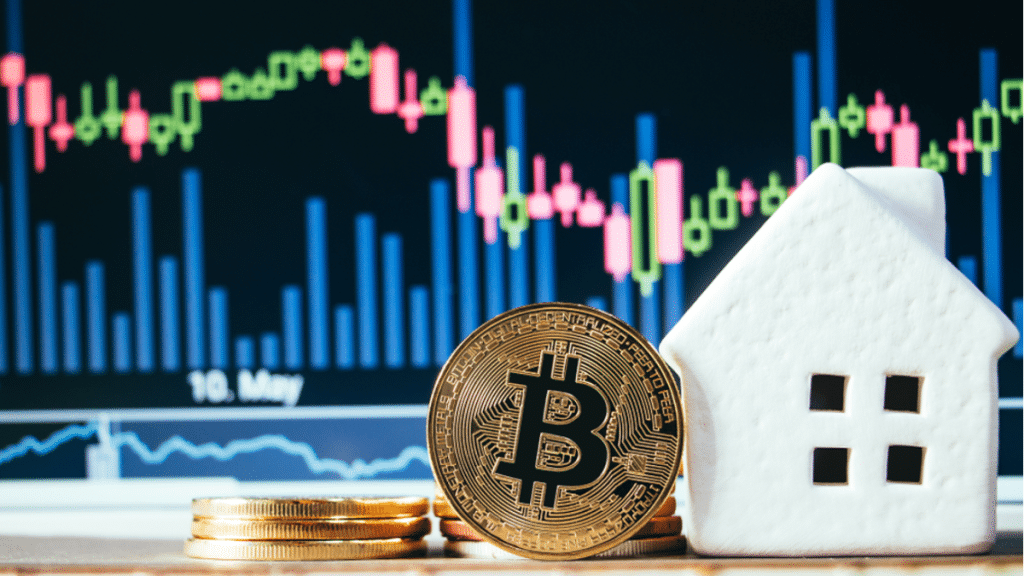Dual PhD holder Domen Zavrl takes an active interest in both real estate development and quantum-proof cryptography. This article will look at tokenisation in the real estate sector and how the rise of blockchain technology has paved the way for a new era in property ownership and management.
Despite all of the discussions, speculation, prejudices and regulatory obligations, blockchain technology continues to evolve, disrupting and transforming an array of different industries, chief among them the real estate market. Tokenisation, an already-existing application of blockchain technologies, has recently found itself a real-world use case in real estate.
Having emerged around the same time as blockchain technology itself, tokenisation was positioned for a bright future from day one, with McKinsey suggesting that the volume of tokenised digital securities will top $5 trillion by 2030. Real estate tokenisation is predicted to be a significant contributor to this growth. In 2022, the market size for real estate tokenisation was estimated at $2.7 billion, with a growth trajectory indicating it could reach $16 trillion by 2030, a report by the Boston Consulting Group suggests.
Tokenisation is a process that involves storing digital representations of assets on a blockchain. Any asset can be tokenised, including investment vehicles such as equities and bonds, art and intangible assets like identity and data, and even real estate.
Tokenising real estate assets essentially involves dividing it into fractions and using smart contracts to automate the operational process. The first step is dividing the property’s value into smaller units in line with the property owner’s preferences. The property can then be purchased piecemeal through the purchase of tokens, either by the same person or many different investors.
First launched in Thailand, Sabai Ecoverse is a global organisation that was launched with the mission of democratising real estate investment for a broader range of people, particularly those who lacked access to large sums of collateral. Sabai Ecoverse co-founder Vadym Bukhkalov suggests that digitalisation of real estate poses potential to augment liquidity, diminish market barriers, streamline processes and enhance transparency across the real estate sector.
One key advantage of tokenising real estate lies in the potential to open up the real estate market to investors with modest amounts of capital, in the process increasing movement and demand for a range of property types. For instance, a property owner with real estate valued at $100,000 could create 100 tokens valued at $1,000 each. By essentially turning property selling into a process similar to crowdsourcing, the seller avoids the need to wait for a prominent investor with $100,000 to spare to come along, instead selling to 100 smaller investors. The result is decreased barriers to entry and increased liquidity in the real estate market. As the capital threshold is lower, smaller investors can enter the arena, enabling properties to be sold faster and promoting liquidity in the real estate market.
Valued at circa $29 trillion dollars in 2021, real estate is one of the world’s largest markets. The vast majority of the global population is connected to the property market in some way, be it as property owners, renters or factory, office or retail workers. Nevertheless, compared to other types of assets, real estate is relatively illiquid and inefficient. Property industry insiders point out that tokenised real estate has the potential to make the industry more dynamic by facilitating fractional ownership of real estate, unlocking access to the property market in a completely novel manner
Tokenised real estate also enables savvy investors to build custom-made portfolios comprising fractionalised real estate tokens across a range of different real estate asset classes, culminating in increased diversification to help mitigate the impact of any single sector downturn. Essentially, tokenised cashflows could unlock the ability to sell the rights to future rental income in exchange for a lump sum, automatically redirecting cashflow to the NFT owner, boosting liquidity and facilitating better price discovery, while simultaneously lowering costs and reducing the risk of fraud.


